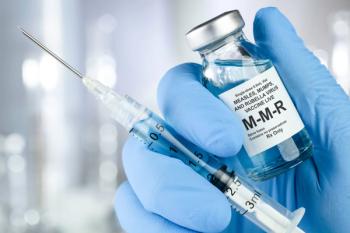
- August 2025
- Volume 41
- Issue 5
Sports nutrition 101: What young athletes should eat and drink
Discover essential nutrition tips for young athletes to enhance performance, hydration, and recovery before, during, and after sports activities.
As team sports ramp up this fall, pediatricians can expect the return of a familiar question from parents: “What should my child eat before the big game?”
Sports nutrition is not just a modified version of general healthy eating—it requires specific strategies to help young athletes sustain energy, stay hydrated, and recover well. Whether you are advising a soccer player, cross-country runner, or competitive swimmer, here’s a practical breakdown you can share with families covering what to eat and drink before, during, and after activity.
Pregame fueling
Carbohydrates are the body’s primary energy source during physical activity, and they are especially important in the 24 hours leading up to a game.1 Yet many families still view them as something to limit. Remind parents that carbohydrates are not the enemy. When timed and portioned appropriately, carbohydrates play a vital role in energy, endurance, and recovery.
The night before a game, dinner should follow a simple formula: Half the plate should be carbohydrates (such as pasta, rice, potatoes, or fruit), one-quarter protein, and one-quarter vegetables. Meals such as spaghetti with grilled chicken and vegetables, chicken stir-fry with vegetables and steamed rice, a turkey sandwich with pretzels and fruit, or even breakfast-for-dinner all provide appropriate precompetition fuel.
In the 1 to 3 hours before an event, opt for easily digested carbohydrates. Oatmeal with fruit, crackers with peanut butter and banana, or a simple turkey sandwich can provide steady energy. If a child needs a quick top-off 15 to 30 minutes before play, small portions of pretzels or animal crackers, applesauce pouches, mini bagels with jelly, or a granola bar can help boost blood glucose and energy availability.
Encourage families to test these strategies during practices—not on game day. Trying new foods or timing combinations for the first time before a competition can lead to unexpected gastrointestinal distress. Help parents understand that what works for one child may not work for another, and that dialing in a nutrition routine takes a bit of trial and error.
Hydration basics
Hydration is not just about chugging water before warm-up. Children should be drinking fluids consistently throughout the day. Roughly 4 hours before activity, athletes should aim for 5 to 7 mm of fluid per kilogram of body weight.2 Hydrating foods, such as watermelon, strawberries, oranges, and cucumbers, can also contribute meaningfully to daily fluid intake. Instruct children to check their urine, which should resemble light-colored lemonade, a sign of adequate hydration.
Midgame fueling and fluid replacement
For training sessions or games that last more than an hour, athletes may need additional energy in the middle of their activity.3 Quick carbohydrates such as sports drinks, juice boxes, bananas, or fruit chews can provide a needed boost. The goal is to replenish glycogen and maintain focus and energy.
Hydration needs vary by age, activity, sweat levels, and environment. A general rule of thumb: Drink 6 to 12 oz of fluid every 15 to 20 minutes.2 One large gulp typically equals about an ounce. In hot and humid weather, or when children have multiple events in a single day, electrolyte replacement may be needed. Some athletes benefit from weighing themselves before and after activity to estimate fluid loss and guide rehydration.
Postgame recovery
After activity, the goal is to restore fluids, replenish glycogen, and repair muscle. Encourage families to offer their child a meal or snack within 30 to 60 minutes of finishing the game.3 Balanced options might include a turkey wrap with fruit, pasta with meat sauce, a peanut butter and jelly sandwich, or a smoothie with milk, banana, and nut butter. Chocolate milk remains a popular recovery drink for good reason—it delivers a near-ideal ratio of carbohydrates to protein, plus fluids and electrolytes, in a familiar and portable format. To rehydrate fully, athletes should aim for 16 to 24 oz of fluid in the 2 hours after competition.2
What about creatine?
As children get more involved in competitive sports, questions about supplements, especially creatine, often arise. Although many products include warnings against its use in individuals under 18 years, these are legal disclaimers, not evidence-based restrictions.4
That said, supplements should never be a shortcut for poor nutrition. Before even considering creatine, young athletes should be focusing on the fundamentals: eating enough total calories, meeting protein and carbohydrate needs, staying hydrated, and recovering properly between workouts. Once those foundations are in place, creatine supplementation may be an acceptable nutritional strategy if the athlete is involved in serious, supervised training; follows a well-balanced, performance-enhancing diet; understands the purpose and use of creatine; and does not exceed the recommended dose of 3 to 5 g per day.4
Final thoughts
When it comes to young athletes, thoughtful nutrition advice can make a meaningful difference. A few targeted, practical recommendations—what to eat the night before a game, how much to drink during practice, or which snacks to enjoy between events—can go a long way in helping young athletes feel and perform at their best. For families seeking a more individualized approach, consider referring them to a registered dietitian who specializes in sports nutrition and can tailor fueling strategies to match the athlete’s unique needs, training load, and goals.
References
- Thomas DT, Erdman KA, Burke LM. American College of Sports Medicine joint position statement. Nutrition and Athletic Performance. Med Sci Sports Exerc. 2016;48(3):543-568. doi:10.1249/MSS.0000000000000852
- American College of Sports Medicine; Sawka MN, Burke LM, Eichner ER, Maughan RJ, Montain SJ, Stachenfeld NS. American College of Sports Medicine position stand: exercise and fluid replacement. Med Sci Sports Exerc. 2007;39(2):377-390. doi:10.1249/mss.0b013e31802ca597
- Kerksick CM, Arent S, Schoenfeld BJ, et al. International society of sports nutrition position stand: nutrient timing. J Int Soc Sports Nutr. 2017;14:33. doi:10.1186/s12970-017-0189-4
- Kreider RB, Kalman DS, Antonio J, et al. International Society of Sports Nutrition position stand: safety and efficacy of creatine supplementation in exercise, sport, and medicine. J Int Soc Sports Nutr. 2017;14:18. doi:10.1186/s12970-017-0173-z
Articles in this issue
5 months ago
Congenital ear lesion in a 10-year-old girlNewsletter
Access practical, evidence-based guidance to support better care for our youngest patients. Join our email list for the latest clinical updates.








